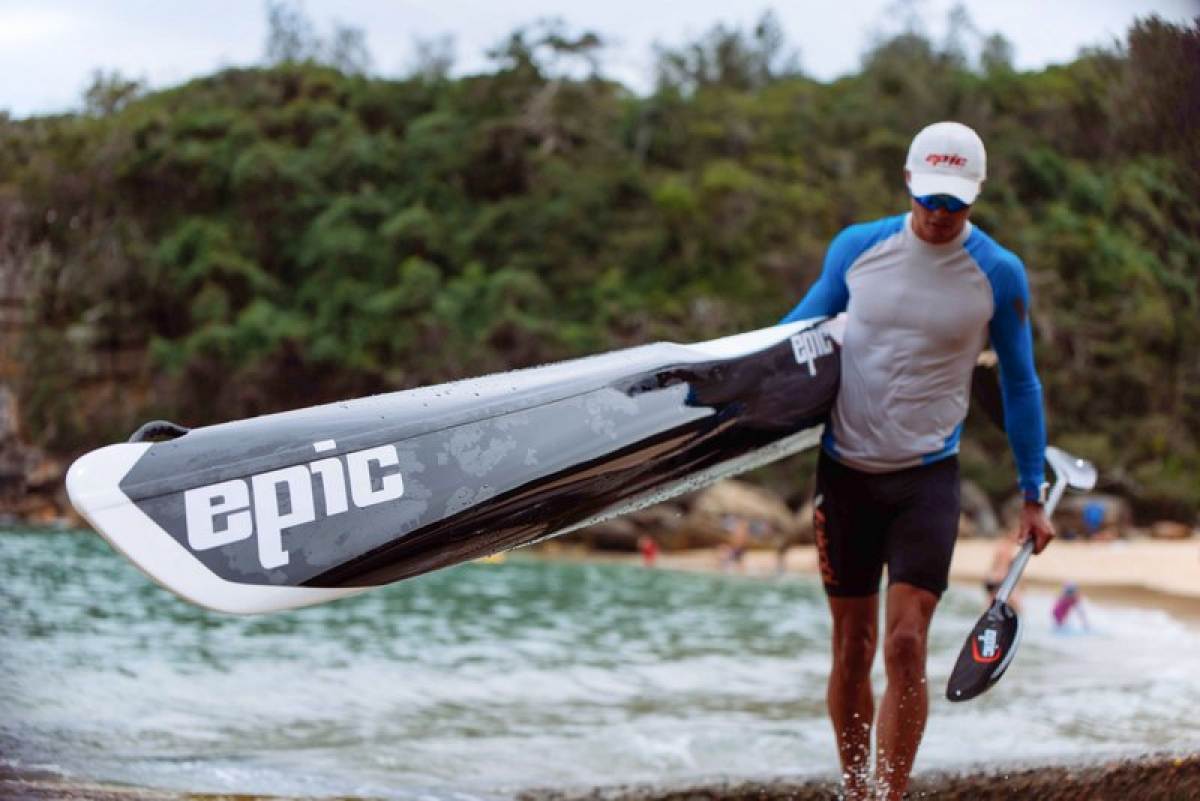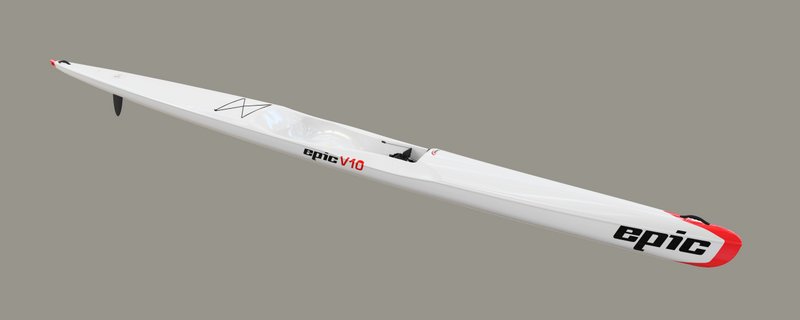Greg Barton on the Gen 3 Epic V10
 The all-new 2018 Gen 3 V10 - in the elite layup
Credits: Epic Kayaks
The all-new 2018 Gen 3 V10 - in the elite layup
Credits: Epic Kayaks
Just how do you go about improving one of the all-time classic surfskis? Epic Kayaks just launched the third generation V10 – and I spoke to Greg Barton, Epic's CEO and chief designer, to find out how and what he changed in the design.
Game Changer
The original Epic V10 surfski was a game-changer when it was first launched back in 2005; aside from the single foot-well, self-setting adjustable footplate, venturi scupper, elliptical rudder etc., the fundamental change was in the stability of the boat. Suddenly you didn’t have to be an elite paddler with Wallenda-like balance to perform in a top-level ski.
Time passed, and in 2013, the V10 was redesigned – with less volume, less rocker, lower rails and a retractable bailer. Stability was increased, as was flat-water speed.
And now comes a third generation of this classic ski, redesigned from the ground up. The first shipment went to Australia and initial comments on Facebook have been ecstatic.
It’ll be a while before we get any here in South Africa, but I was intrigued: how do you go about revamping a classic design like the V10?
I contacted Greg and pelted him with questions.



What were your goals with the redesign?
We’ve had a lot of very positive feedback on the latest V12 – especially for downwind paddling. But the V12 is an elite level ski. Most advanced level paddlers (just below elite) lose a little with V12 stability in big conditions. They’d perform better with something that is more user friendly.
The relatively straight keel (minimal rocker) on the Gen 2 V10 makes it very fast on flatwater and smaller conditions (harbors). These customers have been asking for something that surfs and handles better in downwind conditions.
How do go about design? Is it all CAD, experience or art – or a combination of all three?!
Designing for downwind is part science, and part experience & art.
Flatwater speeds and stability are easier to model and predict. Downwind surfing becomes more art, although I did manage to work up a simulation to give basic handling comparisons between hulls.
When re-designing a ski (or doing a new model), I look at the purpose of the boat – in this case a downwind surfing machine that good/advanced level paddlers can handle comfortably.
The entire design is done on computer. I look at the length, width, rocker profile and volume distributions. Then I create several iterations (with varied features) of CAD surfaces and compare them. It’s always a compromise. The faster versions likely aren’t as stable, or one that performs well on flat water does not work as well in downwind conditions. Once I’m happy with one of the new designs, we cut a plug with our CNC machine and make a boat to test.
Two years ago, we produced 3 prototype versions of the new V12 with different seat positions and sent them to Hawaii for testing. Based on feedback from the testing, the final production Gen 2 V12 used neither of those positions (it was between 2 of the test versions).
We also modified the flare and deck for the final version. This data was then extrapolated to give the best seat position for downwind performance on the Gen 3 V10. Customers are raving about the comfort of the Gen 2 V12 seat and the V11 seat. But we’ve had a few who found those seats just a little too tight – so we added a few mm to the Gen 3 V10 seat relative to the V11 and V12, while keeping a nice low hump under the knees for good leg dive.
From reading the website, the positioning of the V10 relative to V12 is fairly clear: the V12 is slimmer, less stable, for paddlers with excellent balance. The V14 even more so, fastest on the flat, but even elite paddlers might switch back to the V12 in rough water.
The V14 was never intended to be a great downwind ski. It was designed to be extremely fast for elite level paddlers in smaller conditions. The V12 in now the boat of choice for those (elite) paddlers in rougher conditions.
The V11 is a shorter version of the V12. Stability is similar in the 2 boats. There are several reasons why a paddler may choose the shorter V11.
The shorter length may handle better in certain (short & steep) wave conditions. Some customers may prefer a shorter boat for storage or transport issues. I’ve done extensive controlled testing of the V11 vs. V12 on flat water.
For my weight (80 kg), the longer V12 is marginally faster (a few tenths of a percent) on perfectly flat water. But that advantage may disappear as conditions pick up and handling becomes more important.
The problem is that it’s very difficult to measure downwind performance with the same kind of precision. Every session or piece within a session encounters different conditions (more or fewer good runs) so you can’t accurately compare times or speeds – especially when differences are a fraction of a percent.
The Gen 3 V10 is everybody’s boat (for good/advanced paddlers), targeting those who want a great downwind experience. Intermediate level paddlers will be better served by our V10 Sport or V8 Pro.
How does speed and stability of the Gen 3 V10 compare with the V11?
The new V10 is noticeably more stable than the V11. The V11 will be faster in the hands of a highly skilled Elite paddler. But many paddlers may be faster in the V10 because the increased stability allows them to apply full power in a wider variety of conditions.
What's your opinion on the proliferation of shorter boats on the market?
There is a place for shorter boats, and I’m seeing this trend in different forms. Some are lower volume and/or aimed at smaller paddlers. The Epic V11 maintained a fair amount of volume so can handle bigger guys (up to 110 kg) in downwind of conditions. I don’t see the shorter boats fully taking over. There are certain combinations where a longer hull has a distinct advantage.
What are the boats that you paddle most?
I paddle the V14 most of the time because typical conditions here in Seattle are mild. But we’ve got wind today, so I’m putting on the neoprene and taking out my V12!

